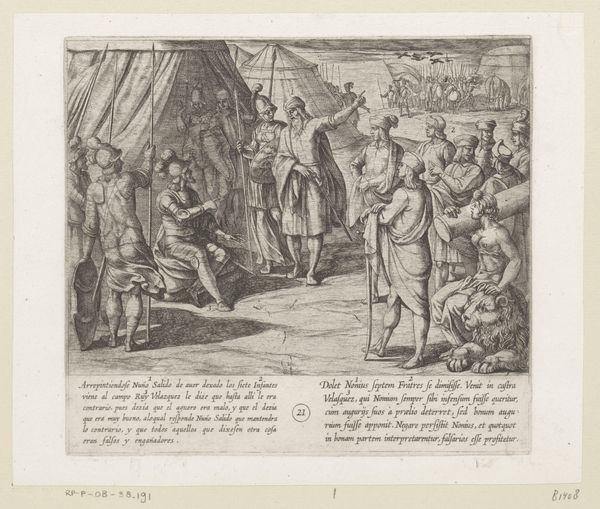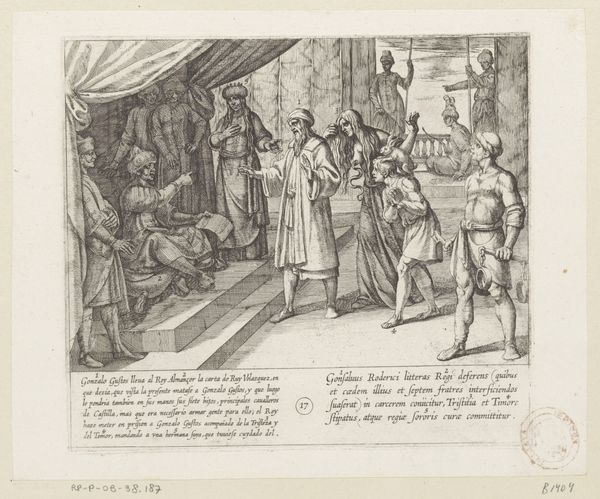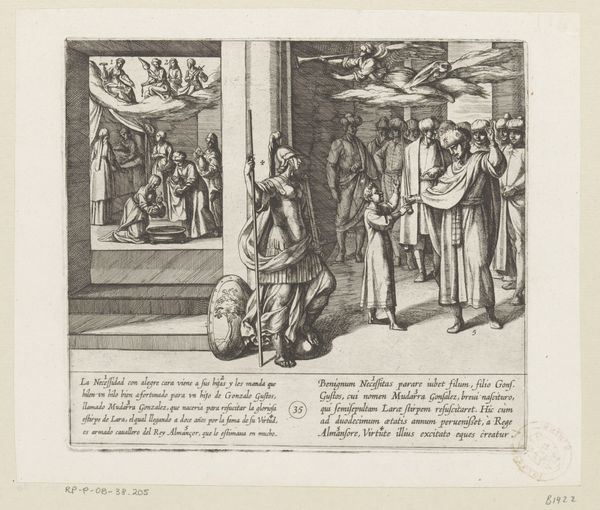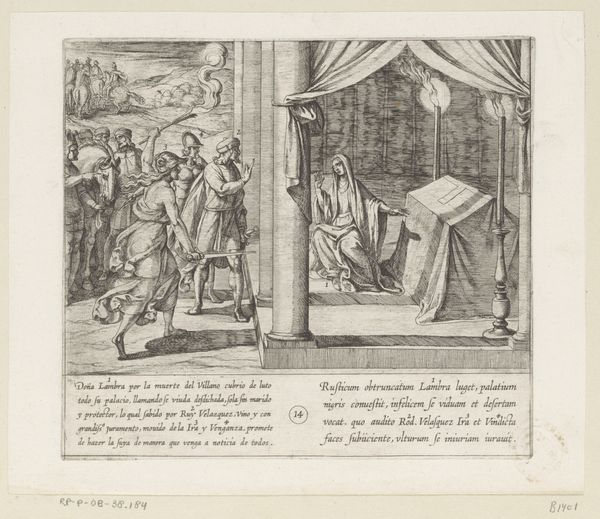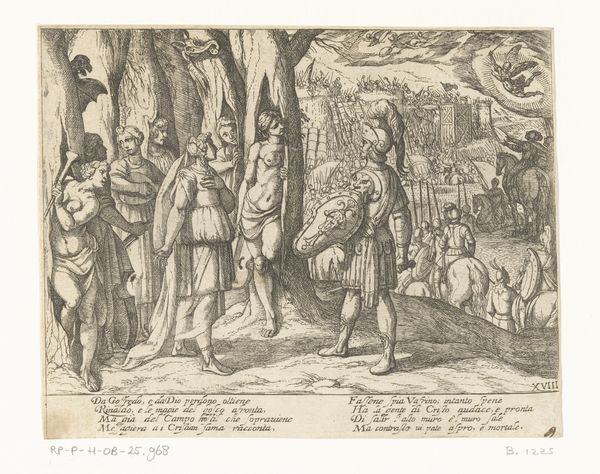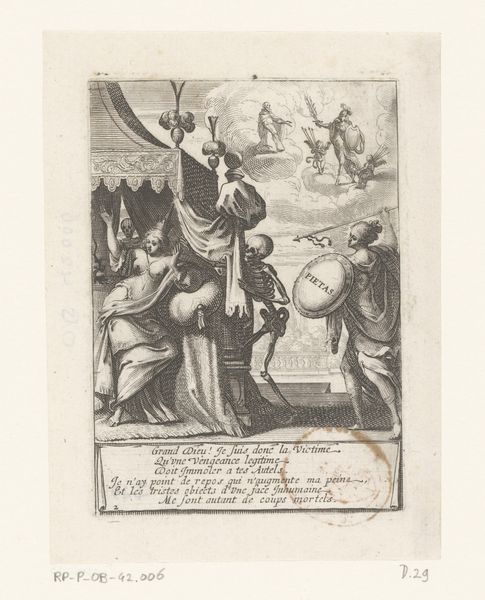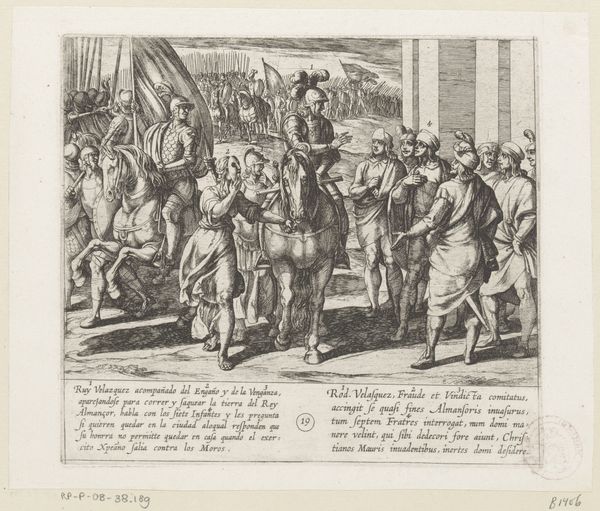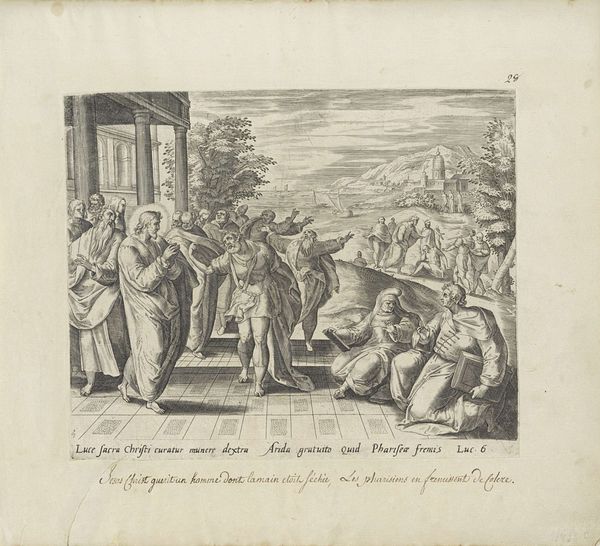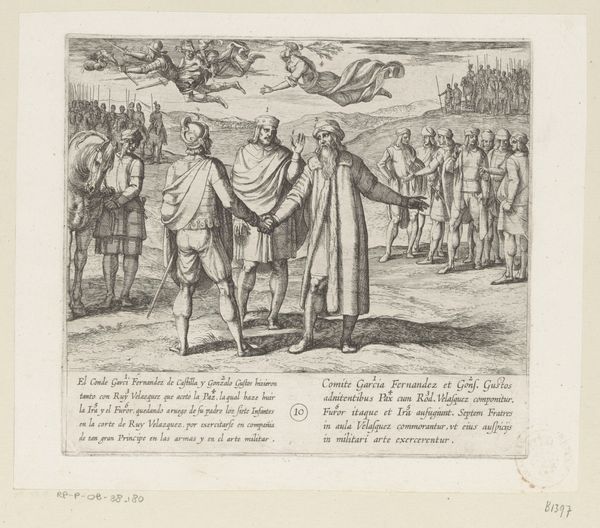
Ruy Velazquez vraagt Gonzalo Gustos een brief af te leveren bij koning Almanzor van Cordoba 1612
0:00
0:00
antoniotempesta
Rijksmuseum
print, engraving
#
narrative-art
#
baroque
# print
#
figuration
#
history-painting
#
engraving
Dimensions: height 185 mm, width 206 mm
Copyright: Rijks Museum: Open Domain
This print, made by Antonio Tempesta, probably in the late 16th or early 17th century, uses the technique of etching. This process involves coating a metal plate with a waxy, protective layer, drawing an image into it with a needle, and then bathing the plate in acid. The acid bites into the exposed metal, leaving behind an incised line, which is then inked and printed. The material qualities of the metal plate are important here. Tempesta could achieve fine, detailed lines, and a wide range of tonal values. In effect, he transformed the copper into a matrix, capable of generating multiple impressions. This links the print to a wider social context, and the burgeoning market for images that existed at the time. We can also consider the labor involved, not only Tempesta's, but also those who mined and processed the copper, made the paper, and operated the printing press. All of these actions contribute to the image we see before us, and the stories it tells us about craftsmanship, art, and the means of production.
Comments
No comments
Be the first to comment and join the conversation on the ultimate creative platform.
